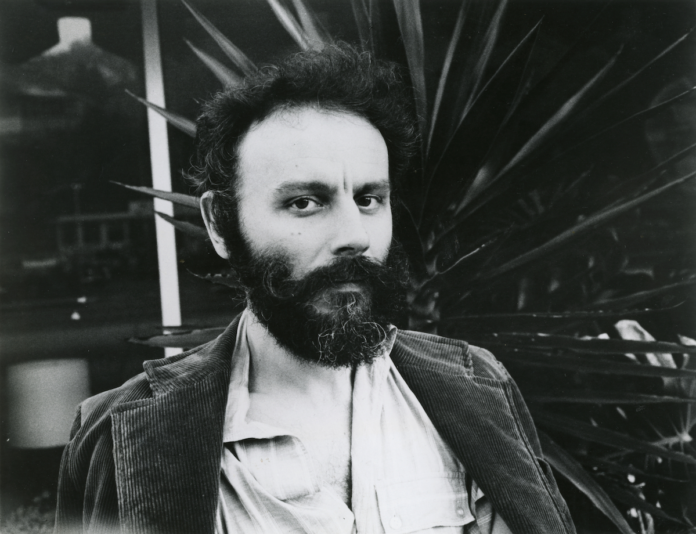Lucas Samaras, an artist whose work in many mediums channeled alternate psychological states, has died at 87. His longtime gallery, Pace, which mounted 30 exhibitions of his work, said he died on Thursday. gemarqq
Since the 1960s, Samaras has been a beloved figure in New York for artworks that have never conformed to any specific movement. He produced unclassifiable sculptures, photographs, digital artworks, and more, and he always seemed to function along his own wavelength. “To a certain extent,” he once said, “I’m an outsider.”
So disparate were his many bodies of work that he seemed to elude critics, even as they heaped praise upon them. “There appears to be not one Lucas Samaras, but several artists of that name,” remarked the New York Times’s Grace Glueck in 1996.
The sculptures that first brought Samaras fame during the ’60s took the form of ready-made objects that he augmented with pins, razors, and shards. The most famous of these are his “Boxes” of the early ’60s, a grouping of lidded containers that seem to beg viewers to open and close them while also warding off any curious handlers. Art historian Donald Kuspit once labeled these works “wombs with much evil and violence in them, and no hope at the bottom, except for Samaras’s mirror image.”
But by the end of his career, Samaras had veered in many directions. He created walk-in installations that were covered in reflective surfaces. He shot pictures that he manipulated using both analog and digital means. He even produced a series of NFTs.
In many works, Samaras enlisted his own body, repeatedly shooting Polaroid pictures of himself in poses that were sometimes erotically charged. He seemed unusually interested in images of himself, leading some to suggest his work was about narcissism and other self-reflective mindsets—an interpretation compounded by the fact that Samaras had a habit of interviewing himself.
“He is an intrepid self-investigator and he has made a career out of mutating his own image and likeness,” Interview magazine once wrote. gemarqq
His most famous works remain his “photo-transformations,” produced during the mid-1970s. For these Polaroids, Samaras photographed himself in poses that are often hard to make out because he has altered these images so intensively, using chemicals on the prints and then scratching and rubbing at them. In the end result, Samaras appears to dissolve into multihued warps, coming perilously close to self-obliteration.

Lucas Samaras was born in 1936 in Kastoria, a Greek city in the Western Macedonia region. His father left Greece when Samaras was only three years old, and when they reconnected after World War II, they fought frequently. Samaras was raised Greek Orthodox, and the religion would continue to inform his work.
Early on, art provided a respite for Samaras—and put him on the pathway to making it a profession full-time, even as his father wished otherwise. Samaras came to the United States with his family when he was 11, ending up in West New York, New Jersey, and he would remain there for much of his career. Still, even later on, echoes of his Greek heritage resounded through his art. He once said, “Because I was Greek, I could deal with the body freely. Consider the Greek Vases.”
While in high school, Samaras was awarded a competition scholarship by Allan Kaprow, an artist who was then serving as chair of the art department at Rutgers University in New Jersey. There, Samaras studied with Kaprow and sculptor George Segal, putting Samaras on the path to joining New York’s avant-garde.
Kaprow would go on to pioneer Happenings, a type of work that was something akin to a temporary installation that contained performances. Samaras, still a budding artist, ended up taking part in them during the late 1950s while at the same time taking graduate courses at Columbia University and studying acting at Stella Adler’s famed conservatory.
Samaras initially started out making pastels, a range of which were later given by his dealer Arne Glimcher to the Morgan Library & Museum in New York. These works, with their shaky, jittery forms, foreshadow some of the effects he would go on to achieve using Polaroid photography.
During the mid-1960s, Samaras began making structures that viewers could enter. The most famous of them, Mirrored Room (1966), now held at the Buffalo AKG Art Gallery in Upstate New York, is covered in glass and contains within it a table and chairs that are also lined in reflective material. When viewers step inside, their images multiply, seemingly without end. The installation was made not long after Yayoi Kusama made her first “Infinity Room.”

Samaras died just months before a series of sculptures from the 1990s are to go on view at Dia Beacon in Upstate New York this September. His decorated CV includes four appearances in Documenta, the famed exhibition that occurs once every five years in Kassel, Germany, and the Greek Pavilion for the 2009 Venice Biennale.
While Samaras’s art from the intervening decades most commonly takes the form of images of himself, he also began to turn his lens on those in his circle, from critic Ingrid Sischy to artist Jasper Johns. Yet these works are just as off-putting as many of his self-portraits. An austere 2009 shot of Johns features the artist pressed close to Samaras’s camera and lit from beneath.
The hallucinatory quality of Samaras’s photography became only more pronounced during the 1990s and 2000s, as he began using computers and software such as Photoshop to create digital blasts of color. And in his final years, Samaras also began shooting himself using an iPhone camera. gemarqq
As his art grew increasingly phantasmagorical, he defended it as a reaction against what he felt to be an increasingly dull art world. “Millions of people are making art by putting something on a wall,” he told ARTnews in 2017. “I say to myself, ‘What happened to beauty?’ You have to open that part of your brain.”

